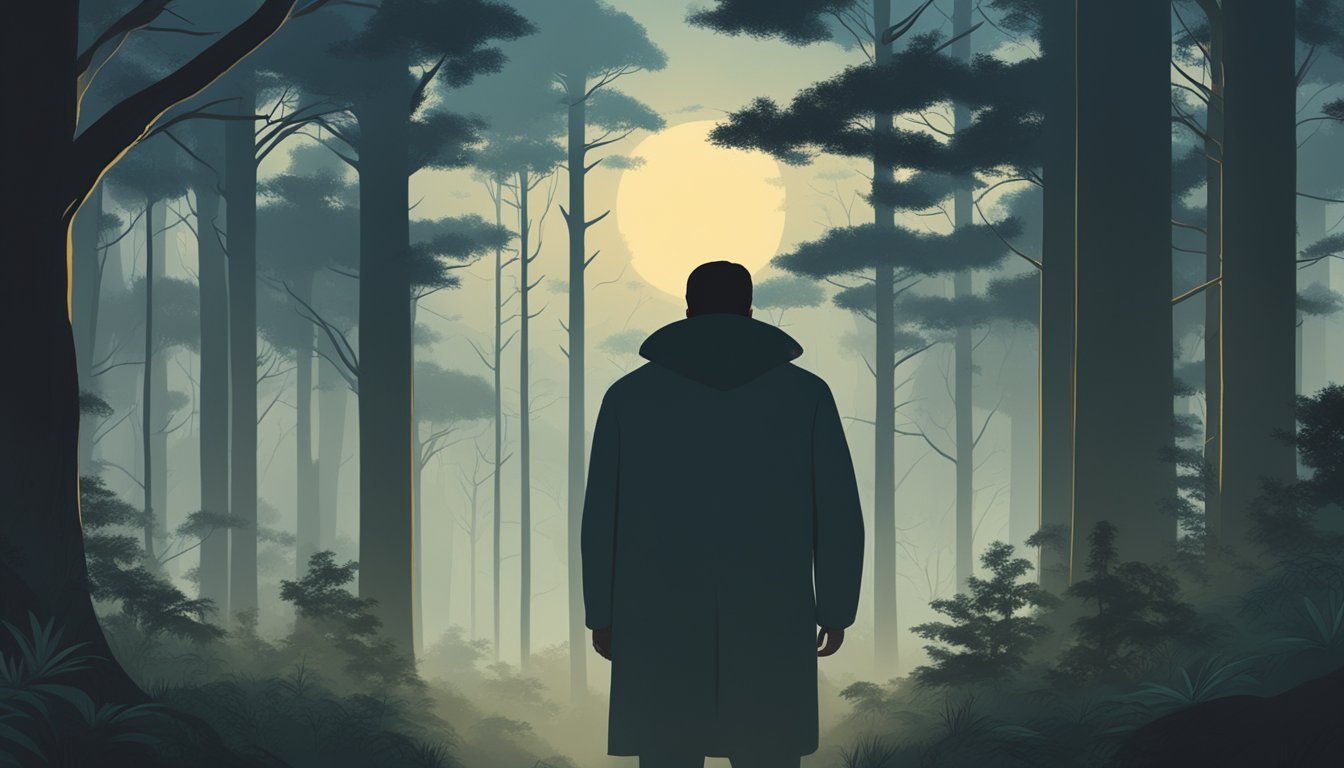Clifford Olson: 6 Disturbing Documentaries on Canada's Beast of B.C.
Examining a Serial Killer's Legacy
Clifford Olson terrorized British Columbia in the early 1980s, committing a series of horrific murders that shocked Canada. Known as the "Beast of B.C.," Olson's crimes left an indelible mark on the nation's criminal history and sparked widespread fear and outrage.
Several documentaries have been produced to explore Olson's dark legacy and the impact of his actions on victims' families and Canadian society. These films delve into the details of his crimes, the investigation that led to his capture, and the controversial "cash for bodies" deal that followed his arrest. Through interviews, archival footage, and expert analysis, these documentaries aim to shed light on one of Canada's most notorious serial killers.
1) Sasquatch Unearthed: The Legend of Canada's Bigfoot
"Sasquatch Unearthed: The Legend of Canada's Bigfoot" explores the enduring mystery of the elusive creature in Canadian folklore. This documentary delves into the rich history of Sasquatch sightings across British Columbia and other parts of Canada.
The film examines the deep connection between Indigenous communities and the spiritual entity known as Sas'qets. It features interviews with Sts'ailes members who share their experiences and beliefs about the legendary creature.
Viewers are taken on a journey through the rugged landscapes of British Columbia, where many alleged Bigfoot encounters have occurred. The documentary presents evidence and eyewitness accounts from various locations, including the Nicola Valley.
Expert researchers and cryptozoologists offer their insights into the Sasquatch phenomenon. The film explores scientific theories and skeptical perspectives alongside traditional beliefs and reported sightings.
"Sasquatch Unearthed" also touches on the cultural impact of Bigfoot in Canada, including events like the Sasquatch Music Festival and the Nicola Valley Bigfoot Conference. It provides a balanced look at the ongoing search for proof of Sasquatch's existence.
2) The Beast of B.C.: A Canadian Nightmare
Clifford Olson terrorized British Columbia in the early 1980s, earning the chilling moniker "The Beast of B.C." His reign of terror left an indelible mark on Canadian true crime history.
Olson confessed to murdering 11 children and teenagers between the ages of 9 and 18. His victims were both boys and girls, making his crimes particularly disturbing.
The killer's spree lasted nine months, beginning in November 1980. Olson's actions sent shockwaves through communities across British Columbia, instilling fear in parents and children alike.
Olson's capture and subsequent conviction brought some relief to the province. However, the impact of his crimes lingered long after he was behind bars.
The Beast of B.C. case has been the subject of numerous documentaries, exploring the depths of Olson's depravity and the lasting effects on his victims' families and Canadian society.
These films often delve into the investigation that led to Olson's arrest, the controversial "cash-for-bodies" deal, and the killer's manipulative behavior even after his imprisonment.
3) Unsettling Truths: The Vancouver Sasquatch Chronicles
The Vancouver Sasquatch Chronicles is a lesser-known documentary that explores alleged Bigfoot sightings in British Columbia. It features interviews with local residents who claim to have encountered the legendary creature.
The film examines various forms of evidence, including footprint casts, audio recordings, and eyewitness testimonies. It presents these findings in a straightforward manner, allowing viewers to draw their own conclusions.
One segment focuses on the Nicola Valley, an area known for numerous Bigfoot reports. The documentary highlights the region's history of sasquatch sightings and the impact on local culture.
Researchers and investigators share their perspectives on the phenomenon, discussing potential explanations for the reported encounters. The film maintains a neutral stance, neither confirming nor denying the existence of Bigfoot.
The Vancouver Sasquatch Chronicles provides a regional look at the enduring mystery of Bigfoot. It offers viewers a glimpse into the ongoing search for evidence of this elusive creature in British Columbia's wilderness.
4) Forest Fright: Haunting Tales of B.C.'s Bigfoot
British Columbia's dense forests have long been rumored to harbor a mysterious, elusive creature known as Bigfoot or Sasquatch. This legendary cryptid has captivated the imaginations of locals and visitors alike for generations.
Numerous sightings have been reported across B.C.'s vast wilderness areas. The central and north coast regions, in particular, have been hotspots for alleged Bigfoot encounters. Indigenous communities in these areas have shared stories of the creature for centuries.
John Zada, an author and researcher, traveled to remote B.C. communities between 2012 and 2015 to investigate Sasquatch claims. His work highlights the enduring fascination with this enigmatic being.
The Nicola Valley in B.C.'s Interior has also become a focal point for Bigfoot enthusiasts. In May 2024, the first Nicola Valley Bigfoot Conference was held in Merritt, bringing together believers and skeptics to discuss potential evidence.
Even small villages like Silverton in the West Kootenay region have experienced alleged sightings. These reports continue to fuel speculation and spark debates about the existence of Bigfoot in B.C.'s untamed wilderness.
5) The Beast Among Us: Canada's Chilling Bigfoot Saga
"The Beast Among Us" explores Canada's fascination with Bigfoot sightings. This documentary delves into reported encounters across the country's vast wilderness.
Eyewitness accounts and expert analyses are presented, offering different perspectives on the legendary creature. The film examines both skeptical and believer viewpoints, allowing viewers to draw their own conclusions.
Canadian folklore and indigenous stories about Sasquatch are woven throughout the narrative. These cultural elements provide context for the ongoing interest in Bigfoot.
The documentary uses dramatic reconstructions to illustrate reported sightings. It also features interviews with cryptozoologists and wildlife experts who discuss the possibility of an undiscovered primate species in North America.
"The Beast Among Us" highlights how Bigfoot has become part of Canadian popular culture. It explores the impact of these stories on local communities and tourism in areas known for frequent sightings.
https://www.imdb.com/title/tt2602102/
6) Into the Wild: Documenting Canada's Elusive Sasquatch
Canada's vast wilderness has long been rumored to harbor the elusive Sasquatch. Documentaries have explored this cryptid, blending folklore and scientific inquiry.
British Columbia, with its dense forests, is a hotspot for alleged Sasquatch sightings. Filmmakers have captured eyewitness accounts, footprint casts, and audio recordings purported to be Bigfoot vocalizations.
The Nicola Valley in B.C. has become a focal point for Sasquatch enthusiasts. In May 2024, the area hosted its first Bigfoot conference, drawing researchers and curious onlookers alike.
Documentaries often feature interviews with local Indigenous communities, whose oral traditions include stories of giant, ape-like creatures. These films examine petroglyphs and other historical records that some interpret as evidence of Sasquatch.
While scientific consensus remains skeptical, these documentaries continue to captivate audiences. They explore the methods used by cryptozoologists in their search for concrete proof of Bigfoot's existence.
Background of Clifford Olson
Clifford Robert Olson Jr. was a Canadian serial killer who gained notoriety for his heinous crimes in the early 1980s. His life was marked by a pattern of criminal behavior that escalated to shocking acts of violence.
Early Life
Clifford Olson was born on January 1, 1940, in Vancouver, Canada. His childhood and adolescence were characterized by troubling behavior and run-ins with the law.
At a young age, Olson began exhibiting signs of antisocial tendencies. He struggled to fit in at school and had difficulty forming meaningful relationships with peers.
By his teenage years, Olson had already started engaging in petty crimes. This early criminal activity foreshadowed the more serious offenses he would commit later in life.
Criminal Activities Before the Arrest
Olson's criminal career began in earnest in 1957 when he received his first jail sentence for burglary. This nine-month stint behind bars marked the beginning of a pattern that would define much of his adult life.
Following his initial incarceration, Olson repeatedly cycled in and out of prison. He became known for escaping custody and being recaptured, demonstrating a blatant disregard for the law.
Between prison terms, Olson engaged in various illegal activities. He worked as a con artist, honing his skills in manipulation and deception. These traits would later prove instrumental in his most horrific crimes.
By 1976, Olson's criminal resume had expanded significantly. While serving another sentence, he shared a cell with Gary Francis Marcoux, an association that may have influenced his future actions.
Impact on Canadian Society
Clifford Olson's crimes shook Canada to its core, leaving a lasting impact on the nation's collective psyche and institutions. His heinous acts prompted changes in media reporting practices and law enforcement procedures.
Media Coverage
Olson's case marked a turning point in Canadian crime reporting. News outlets grappled with balancing public interest and sensitivity to victims' families. Many newspapers adopted stricter guidelines for covering violent crimes, especially those involving children.
The media scrutiny intensified public fear and anger. Newspapers and television stations faced criticism for potentially sensationalizing the murders. This led to debates about responsible journalism and the ethics of crime reporting.
Some outlets chose to limit coverage of Olson's statements and court appearances. This decision aimed to deny him the notoriety he seemed to crave.
Changes in Law Enforcement
Olson's crimes exposed weaknesses in police communication and coordination. Different jurisdictions had failed to connect the dots between missing children cases. This revelation led to improved information sharing between law enforcement agencies across Canada.
The Royal Canadian Mounted Police (RCMP) implemented new protocols for investigating missing persons cases, particularly those involving children. These changes included faster response times and more thorough initial investigations.
The controversial "cash-for-bodies" deal struck with Olson sparked public outrage. It prompted a reevaluation of negotiation tactics with suspects in serious crimes. Law enforcement agencies developed stricter guidelines for such agreements to prevent similar situations in the future.





